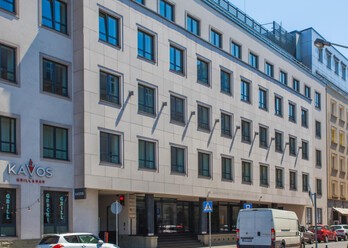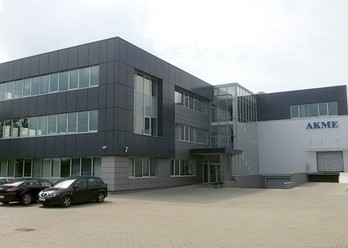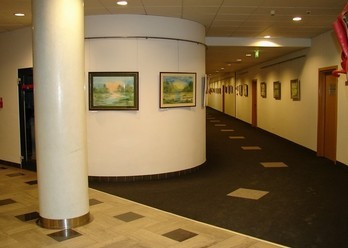Revitalization of historic industrial areas brings cities the most interesting places
- Investments that include revitalization of former factories, power plants, breweries and shipyards, which due to the reconstruction offer new, complementary functions, are now a clear urban trend. It is most visible in the largest cities in the country - notes Mateusz Strzelecki, Partner and Head of Regional Markets at Walter Herz. - Neglected post-industrial areas with historic buildings, especially those located in agglomeration centers, are usually transformed in accordance with the principles of sustainable development. The expert admits that part of this type of endeavor not only brings attractive commercial facilities and improves the quality of public space, but also changes the usability of entire urban quarters.
Mateusz Strzelecki points out that revitalization projects, apart from city-forming advantage, also bring added value in the form of authenticity, which they draw from the identity of the place, history and the unique character of the old buildings. - Therefore, such investments are more interesting than new facilities and become one of the most attractive and presentable places in the cities. The variety of functions and interesting development of new squares, alleys and passages make them fit into the urban fabric, not only as attractive commercial centers, but are also lively, local meeting places and showcases of districts - adds Strzelecki.
- Such well-known projects as Warsaw’s Koneser or OFF Piotrowska in Łódź, which have already become hot spots on the tourist map, are being followed by the others. Stara Praga has been waiting for years for a project that would effectively change its image. Koneser, which successfully combined the charm of age-old architecture with modern design, today attracts crowds thanks to numerous cultural events organized in the facility. Thus, the district which previously prompted reservations, today is perceived as attractive and friendly - explains Mateusz Strzelecki.
Łódź in the process of revitalization
The revitalization program carried out in Łódź is the largest undertaking of its kind in Poland. As part of area restructuring, tenement houses and buildings of the former factory, as well as urban infrastructure are being renovated. The city is investing enormous resources in public space, acquiring substantial EU funds for this purpose. Łódź authorities are gradually developing cooperation with investors. The largest development companies in the country are running their projects in the city.
Recently, Echo Investment has launched an investment. Fuzja, carried out on the premises of the former Karol Scheibler factory at Tymienieckiego Street in Łódź, is to be an open, attractive part of the city, where the old brick buildings will merge with modern ones. It will include 20 buildings with various functions, among which 14 are adapted historic buildings. In the heart of the complex there will be a new municipal square and an Art Nouveau heat and power plant, which after revitalization will be intended for cultural, educational or culinary purposes. The project involves the construction of four buildings with over 600 apartments. It will also bring 40 thousand sq m. of modern office space, and the historic buildings will accommodate 15 thousand sq m. of space for services, shops and restaurants.
Mixed-use Księży Młyn
Earlier, Opal Property Developments invested on the premises of Księży Młyn, which turned U Scheiblera lofts into an over 200-meter building of a former spinning mill, with 421 apartments. Today, the restored Ludwik Grohman factory hosts modern offices. Art Incubator operates in the modernized warehouse buildings. The city has also renovated the neo-Renaissance Herbst villa next to the spinning mill, and in 2020 the Academic Design Center of the Academy of Fine Arts will find new headquarters in the renovated building of the former school at Scheibler’s factory.
Today, in a historic fire station, revitalized by St. Paul’s Developments company, there are modern offices. Textorial Park, a new office building that was built near the historic one, also holds high-class office space. Currently, the developer is preparing the implementation of a new project, the construction of which is expected to begin this year. Textorial Park II includes the renovation and extension of two historic cotton warehouses of the former Scheibler complex and the construction of a modern office building with 26 thousand sq m. of space to let. The company also announces the creation of over 9 thousand sq m. of public leisure area with cafes, fitness center & SPA, and even kindergarten and library.
Monopolis on the last turn
This year, work is to be completed on the revitalization of the buildings of the former Monopol Wódczany from 1902, the third largest factory in Łódź, after Karol Scheibler and Izrael Poznański plants. The mixed-use Monopolis complex, located in the city center, will provide 23.4 thousand sq m. of modern office space, located in the historic bottling plant building and two new buildings. It will also offer a developed culinary, cultural and retail offer on an area of 5 thousand sq m. A bistro will be established in the former flavored vodka laboratory, and a spirit warehouse will house a theater. An important part of the complex will be a museum dedicated to the history of Polish Spirits Monopoly and vodka production technology. Monopolis will include a nearly 100-meter arcade with numerous restaurants and cafes, located in the center of the building.
The revitalization of Aurbach’s tenement house is also starting at Zielona Street in Łódź. Modern offices as well as retail and commercial points on the ground floor of the building are to be commissioned in the building in mid-2021. The neo-baroque tenement house, consisting of a front building and two outbuildings, will bring over 1.4 thousand sq m. of lease area after the revitalization.
Revitalization projects in Warsaw district of Wola
In Warsaw, the last few years are a time of major spatial changes related to the transformation of post-industrial areas, mainly in Wola and Praga Północ. In Wola, between Żelazna, Łucka and Prosta Streets, the buildings of the former Norblin Metal Factory Joint Stock Company, Bracia Buch and T. Werner are undergoing revitalization. Nine nineteenth-century buildings have survived, which will be used as commercial and service facilities after the renovation. Capital Park, which is the project's investor, also plans to build new office buildings. A cinema, theater and museum of the former Norblin factory with 50 restored machines and a collection of platters will also be opened on the premises.
Between the buildings, in an area of 2 hectares, a network of passages, internal streets and squares, filled with greenery, will form a mini district. ArtN is to provide 66 thousand sq m. of usable area, including 40 thousand sq m. of office space and 26 thousand sq m. of space dedicated to the commercial, service, entertainment, cultural and culinary functions. BioBazar, clubs, restaurants and foodhall with over 20 culinary concepts will operate in the complex, which is to open at the end of 2020. A four-level underground car park is also included in the project.
Browary Warszawskie and Bohema
The former Haberbusch and Schiele Brewery and later Browary Warszawskie are located nearby Norblin factory in the quarter of Grzybowska, Wronia, Krochmalna and Chłodna Streets. Echo Investment is implementing a residential and office complex in this area. The investment includes two new buildings of Biura przy Willi and Biura przy Warzelni offices, which will include a total of 46 thousand sq m. of space and residential buildings. The investor has already restored the splendor of a 19th-century villa on Grzybowska Street, where the co-owners of the company, Feliks and Kazimierz Schiele, used to live. The building of the former brewhouse and 170-year-old, historic cellars are to be revitalized and gain culinary and entertainment functions. Browary Warszawskie will also gain a new street - Haberbusch and Schiele, and five city squares. The facility will offer a rich culinary offer, and a 19th-century brewhouse will be opened in the central point of Rynek Warzelni. The investment is to be completed in 2020.
In turn, the restructuring of the former Pollena-Uroda factory is underway in Warsaw's Praga on Szwedzka Street, not far from the famous Koneser, thanks to which the district has gained popularity among the city's residents and tourists. On the premises of the plants that belonged to the Schicht family before the war, Okam Capital is constructing a residential and commercial complex called Bohema. The project includes the construction of new buildings and the revitalization of historic buildings. In the center of the new open city square, where artistic events will take place, there will be a 83-meter chimney towering over the Pollena plant. Revitalization of historic buildings of Kotłownia, Glicerynownia and Warzelnia, which will hold about 6.5 thousand sq m. of modern commercial space has already begun, and its completion is scheduled for the first quarter of 2021. Bohema, situated on a 4.3 hectare area, will offer flats, commercial and office premises, as well as co-working space.
Elektrownia to light up again in Powiśle
Soon life will also return to the abandoned PZO building on 316/320 Grochowska Street. At the pre-war optical manufacture, Cain International and White Star Real Estate are planning to build 121 apartments and renovate over 12 thousand sq m. of office and retail space in the former factory building. The investment is expected to be completed in 2021.
White Star Real Estate together with Tristan Capital Partners in Warsaw’s Powiśle is also running a project related to the revitalization of the former Warsaw Power Plant from 1904. The multifunctional Elektrownia Powiśle in three new office buildings will offer 22 thousand sq m. of space to let, plus 90 luxurious, loft apartments for rent and a boutique hotel with 150 rooms. On the premises of the facility, which is to be commissioned this autumn, there will also be a shopping and restaurant section of 18 thousand sq m. with almost 40 different culinary concepts and new city squares situated between the restored and the new buildings.
Revitalization of Stocznia Cesarska has just started
Project related to the revitalization of the area of Nowe Miasto and Stocznia Cesarska in Gdańsk also looks very interesting. The restructuring will cover 73-hectare former shipyard area on the Motława River, located in close proximity to the Old Town, which today is the property of private investors. The plans include the use of former shipyard halls and the construction of new hotel, office and residential facilities. The revitalization of this area is to give Gdańsk a new, representative district with numerous restaurants, shops, service outlets, as well as parks and squares for residents, in addition to the residential and commercial buildings.
The revitalization of Stocznia Cesarska buildings, which is a unique place on the city map, has just started. Belgian company Stocznia Cesarska Development has recently received a building permit, enabling the renovation of Dyrekcja building. The renovation of the historic building from 1878 is to be completed in July 2020. There will be 4 thousand sq m. of the renewed Dyrekcja office space, as well as conference rooms, relaxation zones, cafe and event space. The first stage of the project implementation will also include the adaptation of Remiza and the construction of the first four residential buildings on Plac Dyrekcyjny square and new public space. Many developers are currently preparing their commercial and residential projects in the area of Młode Miasto.
Poznań, Kalisz and Radom with stylish places
Poznań will also gain a new district with various functions. A new urban quarter will be built on the premises of a former CHP plant in the Warta River bends. Part of the area where Mała Wenecja is planned belongs to Veolia, and part to the city that is looking for investors for this venture. To achieve that, a concept for the development of the Garbary CHP Plant in Ostrów Tumski has been developed.
An interesting, recently completed revitalization took place in Kalisz, where Calisia One, a mixed-use business complex has been opened in the area of the former Calisia Piano Factory. Modern office space has been commissioned in the oldest, historic part of the buildings. It includes a piano produced in 1939. Hampton by Hilton Kalisz hotel also functions in the complex as well as revitalized courtyard with bars, restaurants and culinary concepts.
The buildings of Fabryka Broni Łucznik weapon factory in Radom are waiting for their next incarnation. Industrial Development Agency will select a contractor for project documentation, reconstruction and superstructure along with a change in the use of the factory buildings complex at Przemysłowa Street. Modern office space is to be constructed in the old buildings, primarily for the modern business services industry. There will also be conference rooms for trainings, didactic as well as cultural and educational activities.




